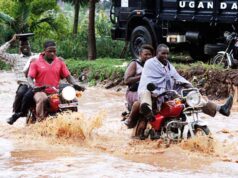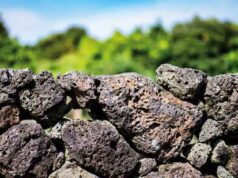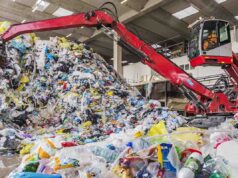By Michael Kanaabi
Bugoma Forest is one of the largest central forest reserves in Uganda, covering 404 square kilometres. It is located 250 kilometres North West of Uganda’s capital in Hoima district.
A portion of this central forest reserve that was legally given away for redevelopment by the National Forestry Authority (NFA) with support of some officials from Bunyoro Kitara Kingdom and the local government has remained a point of contention to date.
However, environmental activists led by Dr Jibril Owomugisha, the Chairman of Greening Uganda campaign, say this will have direct consequences on the environment, ecosystem of the greater Bugoma conservation area and should be halted.
This was announced in a recent press conference held at Kampala Serena Hotel.
The activists brought together under the Greening Uganda campaign have emphasise it is wrong to degazette part of the forest for sugar cane growing as it will, in no way, add to the economic well being of the communities around the area.
“The Bugoma forest eco-system and the greater Bunyoro sub-region is already a fertile land that has been supporting its inhabitants well through agriculture and eco-tourism over the years-something sugar cane growing is likely to disrupt and destroy over time,” Owomugisha says.
The long-term effects of deforestation to plant sugar cane in Bugoma and greater Bunyoro will result into depleted soil fertility, which is already a challenge in Busoga sub-region.
According to Owomugisha, when the forest cover is depleted and sugar cane growing is practiced, rainfall patterns will also be affected, leading to droughts and run offs due to bare soils.
It will also lead to silting as the soil cover will be washed off into water bodies destroying its fertility.
In addition, while the sugar cane plantations will create some jobs alongside the factories, they cannot be enough to provide sustainable employment and livelihoods for people in the area, who have lived off the forest’s ecosystem for hundreds of years.
As a result, Owomugisha adds that there will most likely be a loss of livelihoods for more people around this forest than there will be jobs created by the factory and plantations leading to increasing poverty levels in the long run.
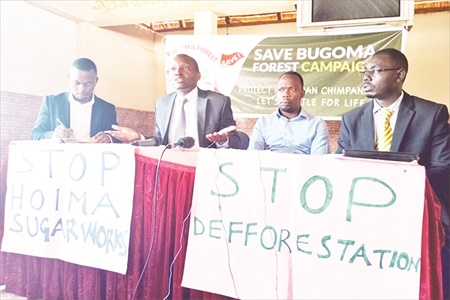
What is happening
Initially, some officials of the Kingdom of Bunyoro had given away 22 square miles of the forest for sugar cane growing.
This was later amended when the National Environment Management Authority realised about 13 square miles of them were swamp, wetland and water catchment areas.
As a result the, 13 square miles were removed from what was to be given away and only 9.24 square miles of Bugoma Forest was consequently given away for ‘redevelopment’ by NFA.
Extra land was also allocated to the investor to set up a forest reserve of 3.3 square miles, 6.17 square miles restore the natural forest and 1.97 square miles for eco-tourism.
The activists also emphasise that while NFA has the mandate to effect these giveaways and legally did so, given the law confers these powers on it as an authority, assessment shows it did not follow both local and international best practices while doing so.
It is on that note that they request the whole process be reviewed, other stake holders including the locals and activists be consulted more and the re-development plus sugar cane growing activities be put on hold till further notice.
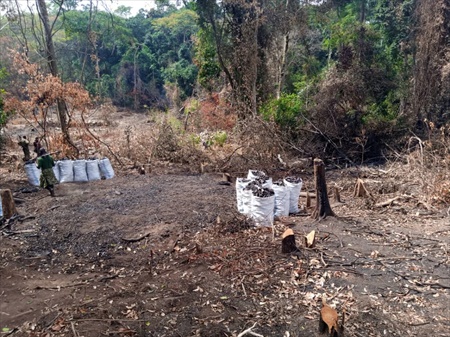
Way forward
According to Juliet Mubi, the NFA Public Relations Officer, they are on ground monitoring the situation to try and mitigate any possible disastrous effects that may result out of this.
“Besides educating and empowering the local communities in the area on sustainable forestry livelihoods, we are also reviewing the cases of some of the land titles given away in central forest reserves across the country; if the investors are found to be in contravention of the agreements, the project can be halted” she says.
She adds that however, this has to follow all the legal procedures and especially targets those who obtained land illegally, plus those not following the agreed development plan with NFA.
Owomugisha advises that the sugar cane factory and plantations project be shifted to an arid land like Karamoja where it will help reclaim the dry drought prone eco-system there by providing a much needed economic activity and also support the area to be irrigated for food growing.
Secondly, authorities should be serious to stop activities like charcoal burning and deforestation that are already being practised around Bugoma forest to save the delicate eco-system of the area.
The focus should be put on educating the local population about how they can fully participate in eco-tourism to create a sustainable livelihood for themselves and also preserve the forest.
Authorities should also encourage agro-forestry among the locals so that they do not have to deplete the natural forest that supports them.
+++++++++++++++++++++++++++++++++++++++++
Subscribe to our website and be the first to receive great Christian news, health information, pastoral guidance, environment, farming and many others. Also, Like and follow us on Facebook at Good News UG.
















